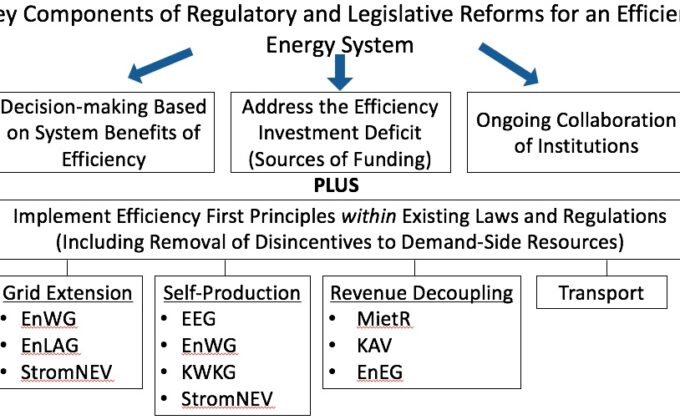
Blog
Incisive commentary from RAP experts
RAP experts keep their finger on the pulse of the energy sector and provide timely analysis of topics impacting stakeholders TODAY.
Filter >>
Content Filter:
March 2, 2016
Long Live the Duck — and May He Fly Flat
- Jim Lazar
Utilities and grid operators from Germany to Hawaii have expressed concern about their ability to maintain reliable service as increasing amounts of variable renewable energy–primarily wind and solar–are added to a grid that has historically consisted overwhelmingly of… View Summary +

February 29, 2016
The Inexorable Shift of the US Power Sector
- David Littell
While the U.S. Supreme Court’s temporary stay on enforcement of the Clean Power Plan has grabbed headlines recently, it’s important that we read deeper, and consider the broader context, of which the CPP is only one part. In recent years,… View Summary +
February 15, 2016
Protecting the Competitive Market for Services in a Changing Power Sector
- Janine Migden-Ostrander
The electric industry is in transition and some jurisdictions are reconsidering the role of the utility and private enterprises offering products and services to customers. New companies are offering services and products, including energy efficiency, demand response, and distributed generation,… View Summary +
February 2, 2016
The Next Quantum Leap in Electric Efficiency—Game On
Ten years ago, the most aggressive electric efficiency efforts in the country were achieving first-year electric savings of about 1.0 percent of annual sales. Today, at least five different states have—or plan to—double those levels of savings, achieving between 2.0… View Summary +
February 1, 2016
Recognizing Early Action Under the Clean Power Plan
- Ken Colburn
Data suggest that the electric power sector’s long march toward decarbonization was already well underway before the EPA’s Clean Power Plan (CPP) rulemaking, let alone the final rule’s compliance period, which doesn’t begin until… View Summary +
January 21, 2016
Polski system elektroenergetyczny a dyskusja o nowej organizacji rynku energii elektrycznej w Unii Europejskiej
- Jan Rączka
Europejski system energetyczny znajduje się w fazie transformacji, której źródłami są postęp technologiczny, zmieniające się modele biznesowe i dążenie do zmniejszenia emisji CO2. Komisja Europejska postawiła ambitne cele na rok 2030, a kraje członkowskie wspierają ich realizację. Osiągnięcie 40% poziomu… View Summary +

January 12, 2016
Power Sector Transformation Advances, With Choices, Questions, and Big Opportunities
- Richard Sedano
As we head into the New Year, RAP’s U.S. team will be devoting more time to a broad set of issues known as “power sector transformation.” Power sector transformation in the United States will affect the way many of us… View Summary +
January 11, 2016
Nie uciekniemy od inteligentnych sieci
- Jan Rączka
Budowa inteligentnych sieci i zarządzane popytem powinny być priorytetami. Z jednej strony zmusi nas do tego polityka Komisji Europejskiej, z drugiej – mogą one sprawić, że mało elastyczny polski system energetyczny będzie bardziej efektywny. W latach 2008-13 inteligentne sieci energetyczne… View Summary +

December 16, 2015
Power Sector Modernisation and Market Design in Poland
The Polish power sector is at a pivotal moment. It faces a number of challenges stemming from the profile of its power system, rising demand for power during summer peaks, and increasing penetration of renewable resources on the system. Its… View Summary +
December 11, 2015
Efficiency First for Germany’s Energiewende
Germany’s “Energiewende” (Energy Transition) represents a national commitment to meet aggressive economy-wide decarbonisation targets and to transform the German power sector from a reliance on nuclear and coal to renewable resources within the next four decades. Germany is unique in… View Summary +

